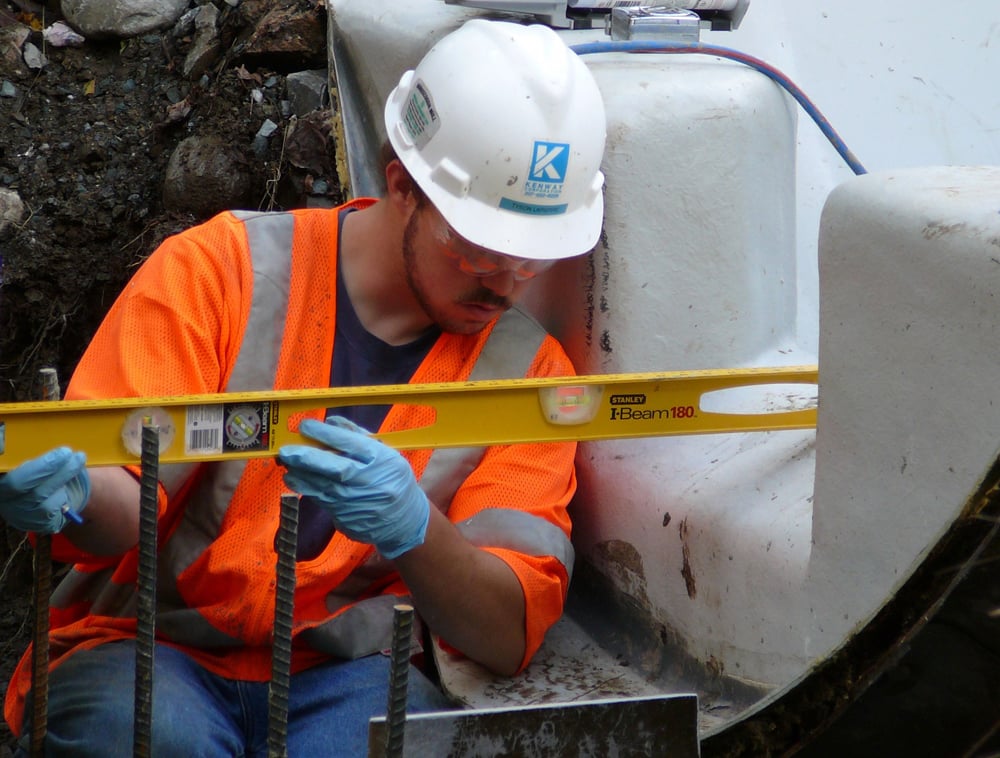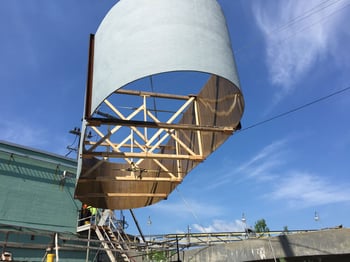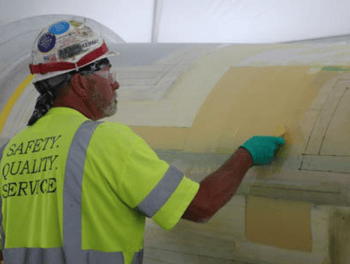
Onsite fiberglass reinforced polymer (FRP) repairs by field service technicians is important in emergency and non-emergency situations. Technical expertise is critical for installation of new tanks, liners, platforms, and other equipment. It's equally important to understand how this equipment operates under real world conditions.
Skills and experience really count in these situations, so here’s what to look for when evaluating field service providers:
Installation Experience

Most FRP structures are fabricated in the factory and transported to the site. Walkways, stairs and platform panels are often delivered in large sections that are assembled in place inside the customer’s facility. The containment integrity of tanks means they generally arrive in one piece and are installed and connected to other process equipment on site. In cases where indoor applications have limited access [such as in lower levels or with factory door size], these factors, as well as short timeframes, can pose a challenge for installation. Experience is critical in creating the right plan and executing the job successfully.
Seasoned technicians are able to install tanks, towers, ductwork and walkways efficiently, minimizing disturbance to surrounding equipment, traffic, or operations. Technicians can also apply storage tank liners directly to properly prepared steel, tile, brick, concrete, and FRP tanks to make them corrosion resistant.
Repair and Rehabilitation Capabilities for Existing Structures
Operational and environmental conditions take a toll on tanks and structures over time, especially when corrosive chemicals are used. The repair process requires replacing damaged material with new layers of reinforcement material. The correct resin type is determined by the materials in contact with the structure and the  operating conditions. For example, in chemical storage tanks, factors like fluctuating temperatures or salt formation influence the resin selection.
operating conditions. For example, in chemical storage tanks, factors like fluctuating temperatures or salt formation influence the resin selection.
Most repairs are made with patches of reinforcement material that are twice the length and width of the affected area versus replacing the entire piece. Proper preparation and fiberglass/resin application is key to restore the structural integrity.
FRP Expertise
From factoring in loading requirements for nozzle repairs on FRP tanks to assembling large tanks and towers, the best technicians specialize in working with FRP composites. This includes correct fiber layup and wet-out with resin, rolling out air pockets in a laminate liner, properly sizing patches, and mixing and applying the right resin and catalyst for the application.
How to Get the Most out of a Field Service Visit
Some repairs are surprises with little time for planning. To avoid being caught unprepared with a leak or crack, its important to identify a vendor that offers 24/7 emergency service while FRP structures are still in good condition.
Non-emergency repairs and lining replacements may not be emergency situations, and a little bit of preparation on your part can make for an efficient and quick repair. Providing the following background information can also be helpful for field technicians arriving on the scene:
- Chemical composition and concentration of tank contents
- Operating temperatures and regular fluctuations
- Trace minerals or salts accumulated inside
- Structure or tank age and construction (resins and reinforcement materials)
- Approximate date of last lining replacement or repair
- Dates and details of previous repairs
In the case of a storage or process tank, always have a plan for taking it offline and draining the contents for temporary storage.
Creative Composites Group has the experience, capabilities, and FRP expertise to handle all of your emergency and non-emergency needs through our Kenway Field Services team. We’re available when and where you need us, so please get in touch to learn more today!

